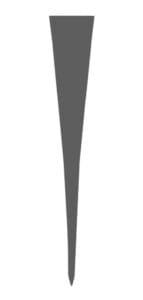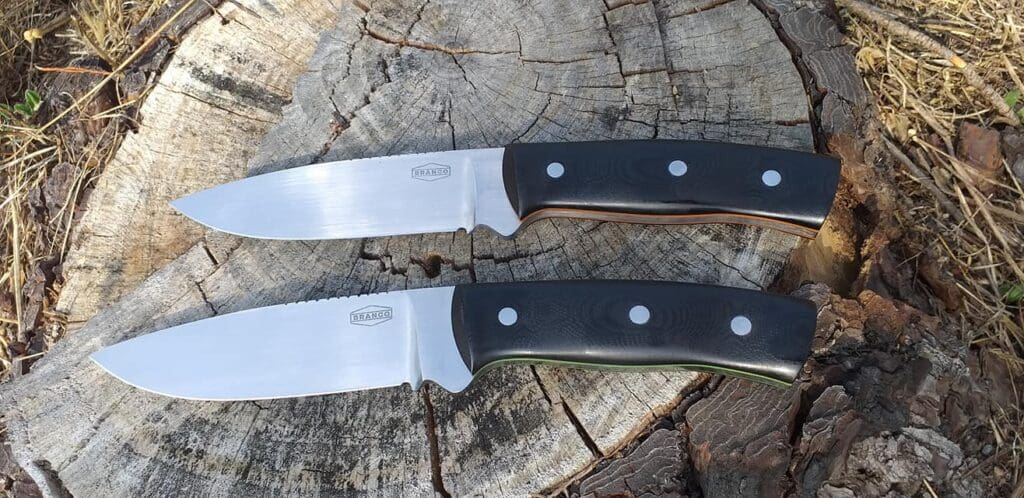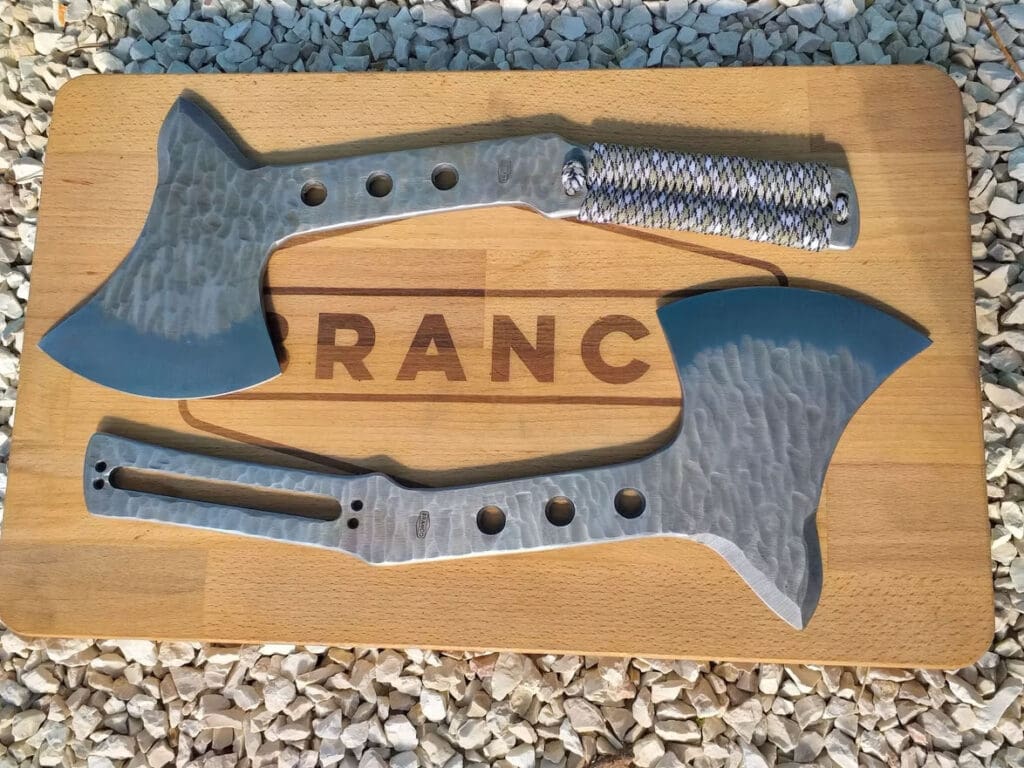Blade materials
Blade material & Grinds
Now before you read anymore – just know that these options/ descriptions etc do not cover everything that is available on the market OR every option available for knife making.
These are my favourites and amongst the most popular.
I am happy to discuss making any of your favourites that are not listed.
If these options are all to confusing, just tell me your intended usage and I can advise.
Blade shapes
These are some of the more popular options for Fixed and / or folding knives.

Knife Grinds
these are some of the more popular options for all knife types.

Flat Grind
A blade ground with flat bevels that extend from the spine all the way to the cutting edge.
The angle of the grind can be adjusted – depending on the thickness of the blade.
Edge thickness adjustable behind the micro bevel – to help suit the intended use and durability.
A good, all rounder option that will work with most knife types.

Hollow Grind
A blade with bevels that are ground with a concave radius.
The bevels may extend the full width of the blade, but is dependant on blade thickness.
Edge thickness adjustable behind the micro bevel – to help suit the intended use and durability.
Very sharp grind option. Minimal material behind the cutting edge. Thinner and less durable blade.

Scandi Grind
A short flat grind on a thin blade where both bevels intersect.
There is no micro bevel.
This leaves a lot of material behind the edge, strengthening it.
However the zero edge is very easy to sharpen to razor sharp.
A very popular choice
for skinning and bushcraft knives.
Steel types
There are a few common blade steel types which fall into some of the categories below, although there are more. These are two of the most popular
“Stainless steel is not stain proof – it just stains less.”
Stainless steel is armed with built-in corrosion resistance but it can and will rust in certain conditions—although not as quickly or severely as conventional steels. Stainless steels corrode when exposed to damaging chemicals, saline, grease, moisture, or heat for prolonged periods of time.
High Carbon Steels:
Carbon steel grades with high amounts of carbon are desirable for knife making because they will give the blade the hardness and strength needed to hold up against impact and wear.
Knives made from carbon steel can also be prone to rusting.
This is due to carbon steels not containing many alloying elements that protect it from corrosion.
Care must be taken to ensure that a carbon steel blade does not rust.
Stainless Steels:
Stainless steel is another type of knife-making metal. The added benefit of using stainless steel is addition of chromium and other alloying elements that increase corrosion resistance.
Stainless steel knives are normally made out of ferritic or martensitic stainless steels. In order to make knives that have decent edge retention, the martensitic and ferritic grades of stainless steel need to have a high enough carbon levels to be able to reach high hardness.
Steel Material types
Steel Material types and what types of knives they are good for. These are just some of my favourites and most popular. Let me know if you want to make a knife from something not listed and we can check out the availability.

N690
N690 is a great value, excellent edge holding, corrosion resistant steel. This makes it a great steel material for all most any type of knife.
Characteristics:
Durable, Wear-resistant, Hard steel
RWL34
RWL34 A particular successful product with very high strength and toughness combined with extreme edge sharpness that is easy to maintain.
Characteristics:
High edge strength,
High hardness after hardening and tempering,
High corrosion resistance


1095
Holds a great edge and is very easy to sharpen. This steel needs an extra bit of TLC, as the steel does rust so it needs to be oiled regularly.
D2
D2 steel is an air hardening, high-carbon, high-chromium tool steel. It is relatively high wear resistance along with good hardness and toughness make it work well as a knife steel.
Characteristics:
“semi-stainless” – provides a good amount of resistance to corrosion.
Hard steel – but not as tough as others.
Holds an edge.
Very difficult to sharpen.

Elmax
Elmax Alloyed powdered steel with extremely high wear and corrosion resistance.
Elmax is stainless but acts in many ways like a carbon steel. You get superb edge holding and the easiest of the super-steels to sharpen while maintaining a healthy resistance to rust.
Damma Steel
Damma Steel the best performing stainless Damascus steel in the world. It has incomparable toughness and strength combined with excellent edge retention and corrosion resistance.
This allows for a very user friendly Damascus steel that is made to be abused.
Characteristics:
Incomparable toughness and strength.
Excellent edge retention
Corrosion resistance
Superior edge sharpness and cutting ability.


80CRV2
80CRV2 Knives and axes that need to be extremely tough with excellent edge retention 80CrV2 steel is an outstanding choice. 80CrV2 knife steel provides a cutting tool with extreme toughness and edge retention; provides a high value for performance vs. cost to manufacture.
Characteristics:
Excellent Edge retention
High-carbon tool steel
Strength
Hardness
Knife Types:
Tomahawks / Axes / Tactical Knives / Hunting Knives